
The Kirkaldy Testing Museum is a unique Victorian workshop.
It still houses David Kirkaldy’s Universal Testing Machine – the last in the World!
The Kirkaldy Testing Museum presents the story of the family who ran the business for almost 100 years and of the wider development of materials testing. The workshop and Universal Testing Machine provide a unique crucible for new experimentation and collaboration – which can inspire future generations of scientists and artists alike to continue enquiring into the properties of the materials on which we build our lives.
David Kirkaldy’s Testing and Experimenting Works at 99 Southwark Street, London set international standards in testing materials from which everyone’s everyday life benefits today!
The Kirkaldy Testing Museum preserves Kirkaldy’s unique Universal Testing Machine – the huge hydraulic powered machine he designed and had built by Greenwood and Batley of Leeds in 1863-4 – in full working order in the premises he built to house it! The testing machine is the only survivor of 2 built and is amongst the earliest testing machines in the world still in working order!
The machine, 47 feet, 7 inches (14.5m) in length and weighing some 116 tons, works by applying horizontal compression or tension to the sample, by means of a hydraulic cylinder and ram (originally steam powered but from 1905 electrically powered). As originally designed the machine was capable of exerting a pull of 446.6 tons.
Check out their website for all your visiting needs – HERE!
The building is grade II* listed because it was designed by Thomas Roger Smith for David Kirkaldy in 1873 in a fashionable and striking Italian Romanesque style and was the world’s earliest purpose-built independent commercial materials testing laboratory! Thankfully, the exterior, ground floor and basement of the building and the testing machine remain largely unaltered.
On the exterior of the building an engraving aptly reads:
“Facts not Opinions”!
David Kirkaldy was important for establishing standardised testing of structural materials in the late-C19. Elements of many important structures and investigations into failed structures such as the Tay Bridge were carried out here in 1880.
The basement contains a Denison chain tester for testing marine chains, added by Kirkaldy in 1906.
David Kirkaldy was succeeded as owner by his son William George (1862-1914) and eventually his grandson, David William Henry (1910-1992). In 1965 the works were taken over by Treharne & Davies and testing continued until 1974 when the works were closed.
The museum is not open everyday, seemingly the 1st Sunday and 3rd Saturday of every month, but check out their opening dates – HERE!
99 Southwark Street, London, SE1 OJF

The Kirkaldy Testing Museum is a unique Victorian workshop.
It still houses David Kirkaldy’s Universal Testing Machine – the last in the World!
The Kirkaldy Testing Museum presents the story of the family who ran the business for almost 100 years and of the wider development of materials testing. The workshop and Universal Testing Machine provide a unique crucible for new experimentation and collaboration – which can inspire future generations of scientists and artists alike to continue enquiring into the properties of the materials on which we build our lives.
David Kirkaldy’s Testing and Experimenting Works at 99 Southwark Street, London set international standards in testing materials from which everyone’s everyday life benefits today!
The Kirkaldy Testing Museum preserves Kirkaldy’s unique Universal Testing Machine – the huge hydraulic powered machine he designed and had built by Greenwood and Batley of Leeds in 1863-4 – in full working order in the premises he built to house it! The testing machine is the only survivor of 2 built and is amongst the earliest testing machines in the world still in working order!
The machine, 47 feet, 7 inches (14.5m) in length and weighing some 116 tons, works by applying horizontal compression or tension to the sample, by means of a hydraulic cylinder and ram (originally steam powered but from 1905 electrically powered). As originally designed the machine was capable of exerting a pull of 446.6 tons.
Check out their website for all your visiting needs – HERE!
The building is grade II* listed because it was designed by Thomas Roger Smith for David Kirkaldy in 1873 in a fashionable and striking Italian Romanesque style and was the world’s earliest purpose-built independent commercial materials testing laboratory! Thankfully, the exterior, ground floor and basement of the building and the testing machine remain largely unaltered.
On the exterior of the building an engraving aptly reads:
“Facts not Opinions”!
David Kirkaldy was important for establishing standardised testing of structural materials in the late-C19. Elements of many important structures and investigations into failed structures such as the Tay Bridge were carried out here in 1880.
The basement contains a Denison chain tester for testing marine chains, added by Kirkaldy in 1906.
David Kirkaldy was succeeded as owner by his son William George (1862-1914) and eventually his grandson, David William Henry (1910-1992). In 1965 the works were taken over by Treharne & Davies and testing continued until 1974 when the works were closed.
The museum is not open everyday, seemingly the 1st Sunday and 3rd Saturday of every month, but check out their opening dates – HERE!
99 Southwark Street, London, SE1 OJF




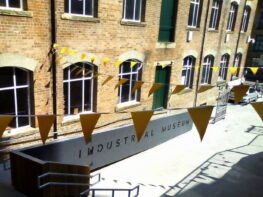
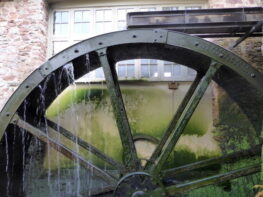
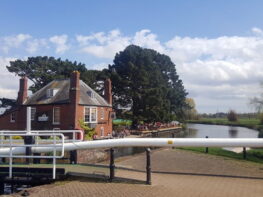
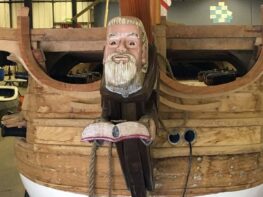
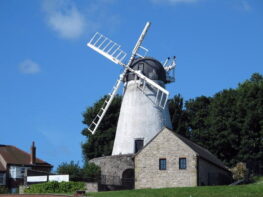
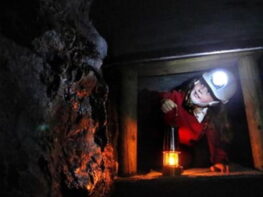
Please change website to testingworks.org.uk. The testingmuseum website still exists but only has summary information and may be decommissioned shortly.
Thanks Colin – I’ve updated the website now 🙂